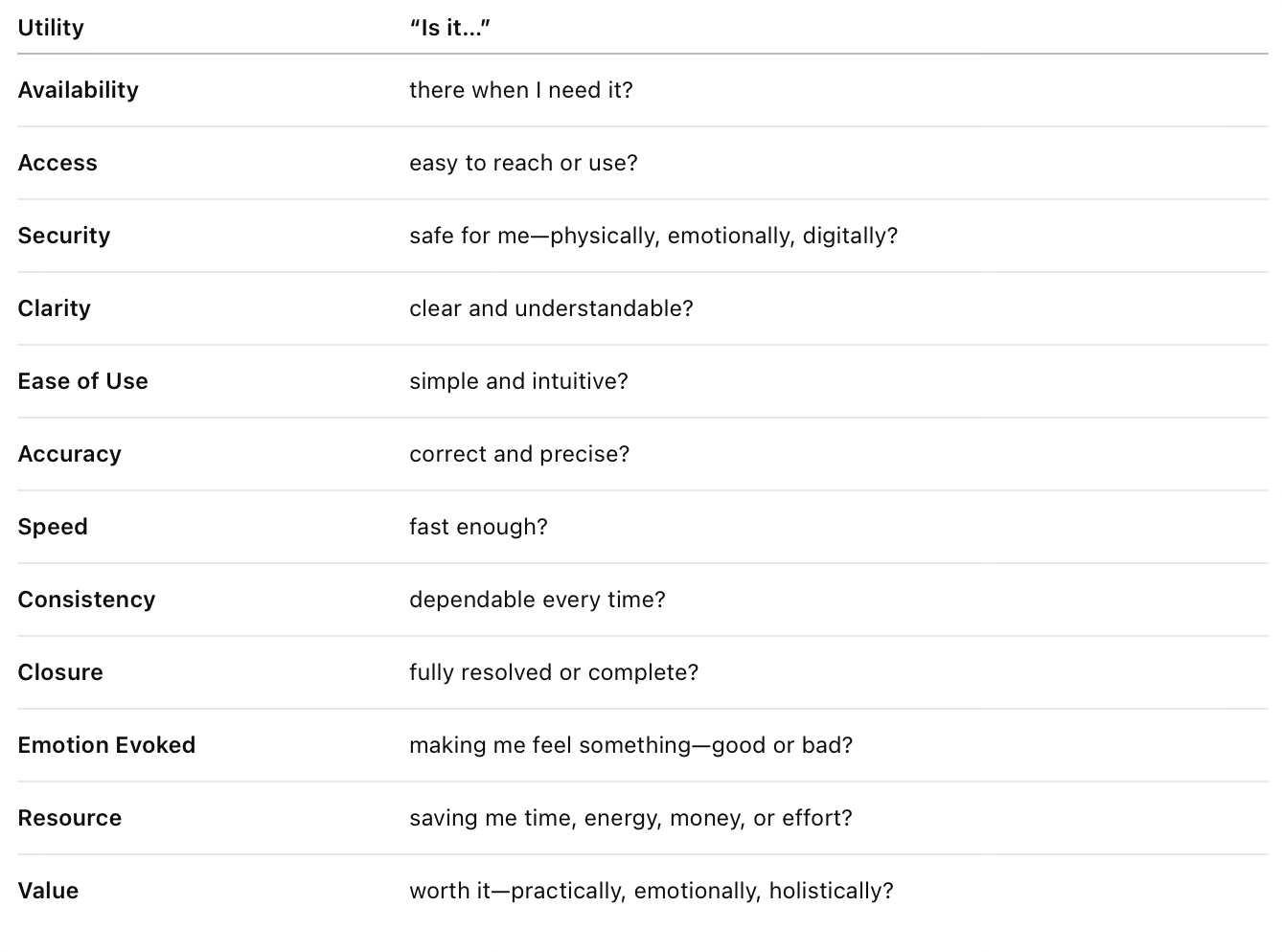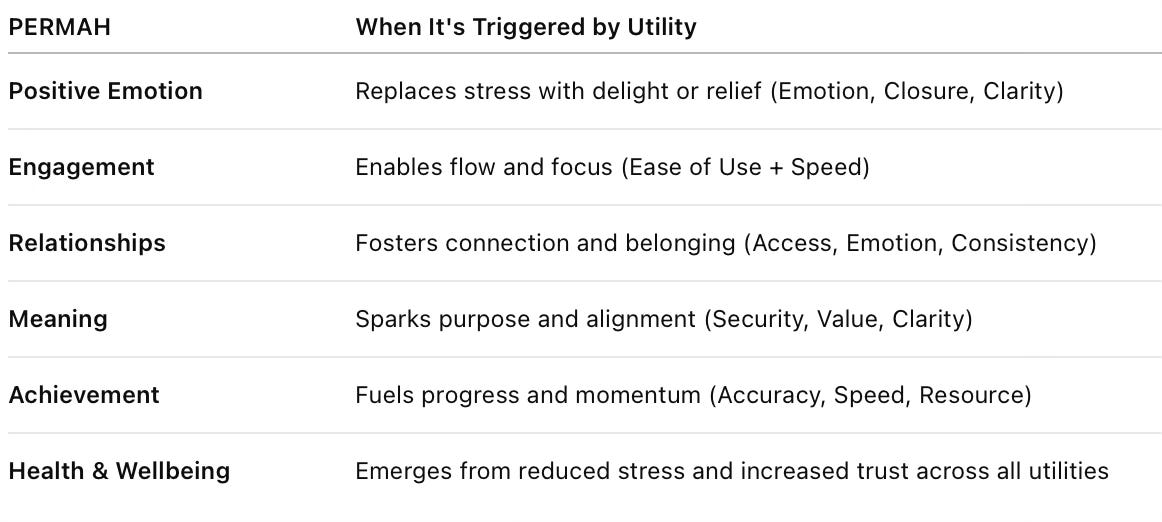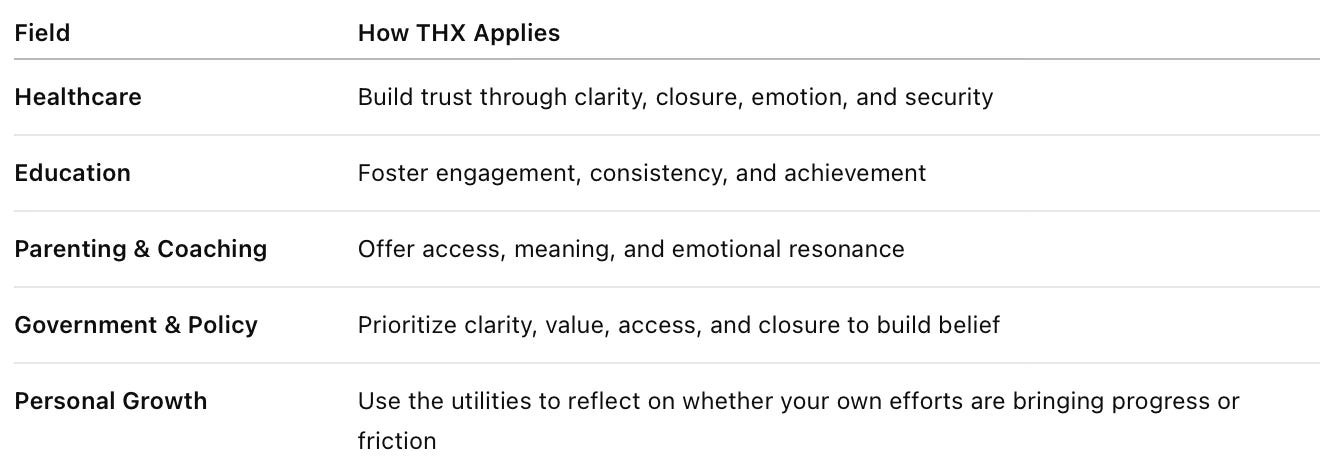From the THX Series Hub: THX Framework Deep Dives
Listen to the podcast
Why improving customer experience isn’t enough—and how to create human experiences that change lives, build loyalty, and move the world.
Over the last 25 years, I’ve helped organizations create more value through better customer experiences. But beneath every standout moment—every “wow” or “thank you” or “that was actually amazing”—was something deeper. It wasn’t just satisfaction. It was transformation.
That shift—from Customer Experience (CX) to Human Experience (HX)—is what THX is all about.
It’s how we go from solving problems to helping people feel like more of themselves. From transactions to transformations.
And this post is your field guide. Here’s how it works.
1. The 12 Utilities: The Building Blocks of Usefulness
Let’s start at the foundation.
The 12 Utilities are the dimensions humans use to evaluate any experience. Not what it is, but how it feels—how useful, meaningful, and worth-it it seemed, relative to what they expected.
Utility = Perceived Usefulness
In economics, “utility” is a measure of usefulness or satisfaction. In THX, it’s about how people feel about what happened—and whether it matched or beat what they hoped for.
This is why some “good” experiences still disappoint, and why small, unexpected moments can be unforgettable.
2. Prospect Theory: Why One Bad Moment Feels Bigger Than Five Good Ones
Here’s the twist: humans don’t judge experiences rationally. We judge them emotionally—through the lens of Prospect Theory.
Losses loom larger than gains.
We track each of the 12 utilities separately.
And we mentally weigh them based on what matters most in that moment.
That’s why:
One confusing instruction can outweigh a great product.
A delay in access or closure can cause someone to never return.
A single emotional misstep can feel like betrayal, even if everything else was “fine.”
People remember the feeling, not the feature.
And that feeling is shaped by how well the experience met their mental accounting of these 12 dimensions.
3. From Utility to PERMAH: When Usefulness Becomes Flourishing
Here’s where things move from practical to profound.
When several high-utility moments align—when expectations are not just met, but exceeded—something deeper can happen: people begin to flourish.
That’s where PERMAH comes in, a model from positive psychology that describes the six core elements of human flourishing:
When you move from solving problems to evoking PERMAH, you stop just delivering service—you start delivering transformation.
4. The Admiration Equation: The Emotional Return on Experience
Once someone experiences PERMAH—even in a small way—they’re likely to feel one of the “other-praising” emotions that drive deep loyalty and advocacy.
We call this the Admiration Equation:
These emotions lead people to:
Tell stories
Refer others
Stick around
Pay more
Trust deeper
They’re not just satisfied—they’re moved. And that’s where the real ROI lives.
5. Micro-Moments: The Smallest Units of Transformation
Big change doesn’t come from big gestures. It comes from small moments that shift how someone feels, thinks, or sees the world.
One moment of clarity
One unexpected kindness
One resolved issue, faster than expected
One perfectly-timed human touch
These are what I call micro-moments. They’re the atoms of transformation.
When 3–5 micro-moments hit the right utilities at the right time, we activate PERMAH.
When PERMAH is activated, we trigger admiration, awe, and gratitude.
When admiration is felt, the story spreads itself.
From Utility to Transformation: The THX Framework Flow
Utility (Usefulness)
→ Measured across 12 dimensions
→ Framed by Prospect Theory
→ Judged as gain or loss vs. expectationsPERMAH (Flourishing)
→ Activated when multiple utilities exceed expectations
→ Results in emotional uplift, identity shifts, and connectionAdmiration Triggers (Emotional ROI)
→ Drive storytelling, loyalty, generosity, and transformation
→ Turn brands, systems, and experiences into something human and meaningful
Why This Matters—In Business and Beyond
This isn’t just a tool for marketing or CX design.
It’s a way to improve any system that touches people:
This is the new frontier—not just making things work better, but making people feel more human, more capable, more seen.
Final Thought: Why CX Isn’t Enough Anymore
CX asks:
“How do we satisfy our customers?”
THX asks:
“How do we change what it feels like to be this human, in this moment, with us?”
Whether you’re designing a brand, a policy, a classroom, or a life—you’re creating experiences that shape human perception and potential.
THX gives us the tools to make those experiences transformational.
What do you think?
Which utility do you think your organization delivers best—and which one needs the most work? Or where have you felt a personal transformation because something exceeded your expectations?
Let’s keep building better human experiences—together.

Interpretation:
Most customer experience efforts stop at satisfaction. THX starts where CX ends—turning micro-moments into transformation.
The vibrant core of the star represents emotion, meaning, and identity shift—what happens when people feel seen, safe, capable, and connected.
It’s not just about performance metrics. It’s about how people feel about themselves because of what you made possible. That’s THX.







